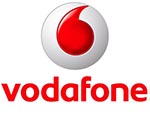Active Networked Tags for Disaster Recovery Applications
Published Feb-16-10Breakthrough:
A network of wireless devices using ultra-low power communications to track and locate survivors trapped by fires and structural collapse.
Company:
Vodafone
The Story:
 One of the world’s leading telecommunications companies, Vodafone, now hosts an an open innovation competition designed to “promote innovation and increase implementation of wireless related technology for a better world.”
One of the world’s leading telecommunications companies, Vodafone, now hosts an an open innovation competition designed to “promote innovation and increase implementation of wireless related technology for a better world.”Organized by Vodaphone Americas Foundation, part of Vodafone’s global network of 24 foundations it offers $600,000 annually in awards to support promising projects.
The focus is on the development of sophisticated advances in the field of wireless-related technology that can be applied to social issues of critical importance. Universities, nonprofit organizations and social entrepreneurs are invited to take part, and though they may operate outside the United States they must be based in the country.
Big Money Prizes
The open innovation contest typically awards three prizes of $300,000, $200,000 and $100,000 for ideas that the panel of judges believes offer the best potential of creating change in a number of areas including economic development, the environment and access to communication.
Nearly 100 applicants responded to Vodafone’s call in 2009 and sent in submissions. These were whittled down to nine finalists who had to give in-person presentations to a panel of judges.
Competition Winners
The main winner of the 2009 contest was a team from the Departments of Electrical Engineering and Computer Science at Columbia University for a technology called EnHANTs (Energy Harvesting Active Networked Tags).
This is a disaster recovery system to help locate people trapped in buildings during fires or other emergency situations; in effect it’s an x-ray system for large structures.
The key components are active network tags that are attached to items that are not usually networked, such as books or items of clothing. They harvest energy from the environment, for example solar energy and energy from movement.
If a building collapses the tags will start talking to each other and create a network that will help disaster recovery teams locate survivors.
The open innovation competition’s two other winners were a project called CellScope which turns an ordinary phone into a compact, high-resolution microscope that can monitor infectious diseases and CelloPhone - a lens free imaging platform on a cell phone for detecting diseases using holograms of cells.
“This year’s Wireless Innovation Project winners hold tremendous promise for leveraging innovation to make a dramatic social difference at a global scale,” said Peters Suh, Chairman Vodafone Americas Foundation and President Vodafone Ventures Ltd.
Competition winners are required to keep Vodafone Americas up-to-date with progress toward project milestones and how the prize funds are being used.
Future Open Innovation Competitions
Launched in 2009 the competition will now be an annual fixture as Vodafone like many other large corporations are using the power of open innovation to address important social issues around the world.
“The impressive thing is that they are not just about the technology,” said Professor Michael Walker, Director of Vodafone Group Research and Development. “They really are about how the technology could change society for the better.”
Next Story »
